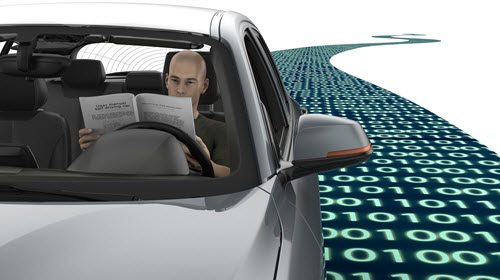





Chances are that by now you have heard about the self-driving cars that more and more auto manufacturers are designing and testing. Driverless vehicles are slowly becoming more and more common on roads, even being used as taxi cabs and Uber vehicles. These autonomous cars utilize some of the latest technology to make hands-free and driverless vehicles possible. There are countless arguments both for and against this type of driverless vehicle technology but one thing that can’t be disputed is the science and tech that is going into making these cars possible. If you have ever wondered how self-driving cars are able to control aspects of driving like staying in lanes and knowing when to apply the brakes, here are just some of the ways that self-driving cars are able to map the world using the latest lasers.
 and with assistance from machine learning, fishes out the traffic lights, lane lines and crosswalks. The LIDAR can actually also read signs as well by measuring the strength of the signals that come back. Civil Maps hopes to create an easier way to sort and navigate through the extensive amounts of data that the LIDAR lasers are constantly sending back.
and with assistance from machine learning, fishes out the traffic lights, lane lines and crosswalks. The LIDAR can actually also read signs as well by measuring the strength of the signals that come back. Civil Maps hopes to create an easier way to sort and navigate through the extensive amounts of data that the LIDAR lasers are constantly sending back.These radars and lasers are designed to help a vehicle map environments and be able to react to sudden changes in the environment either by cars or another type of obstruction. By using lasers, these autonomous vehicles are able to store accurate and up to date maps of an entire environment, giving the autonomous cars the ability to apply the brakes on its own and stay within the right lanes while in traffic.
Developers like Google, Tesla and BMW have all begun to test varying levels of autonomous technology with Google thus far leading the field. This technology is not without its limits however, the one known death with autonomous driving involved was a Tesla driver using the autopilot function though it is still currently unknown if the driver was controlling the vehicle or the autopilot was being used and simply failed.
With so many advances still to be made and technology changing by the minute, autonomous cars will only become more and more available. Before purchasing a vehicle with this technology or utilizing any of the driverless cars that are being tested as cabs or Uber drivers, understanding the technology that powers this technology will help make you more confident that it can actually be trusted and counted on.